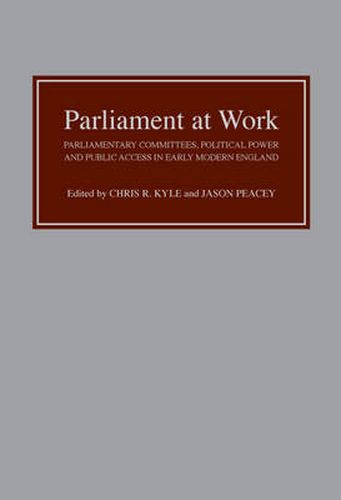Readings Newsletter
Become a Readings Member to make your shopping experience even easier.
Sign in or sign up for free!
You’re not far away from qualifying for FREE standard shipping within Australia
You’ve qualified for FREE standard shipping within Australia
The cart is loading…






The political, social and economic changes which overtook England in the early seventeenth century were both powerful and dramatic, forcing Parliament to adapt from a medieval institution into one with authority over all facets ofsociety. Dynastic change, union with Scotland, fiscal reform, civil war, revolution and Restoration required Parliament not only to be at work, but also to discover how to work. These studies focus on change and development in three areas: firstly, the institution of Parliament itself, exploring its growing institutional sophistication and the problems connected with attendance, workload and physical environment; secondly, on Parliament’s role within theinstitutional set-up of the constitution, and the structure and relationships of power within the governance of the country; and thirdly, on the public perception of Parliament, and the practicalities of the relationship between Parliament and the wider world.
Contributors: JOHN ADAMSON, ROBERT ARMSTRONG, DAVID DEAN, MICHAEL GRAVES, PAUL M. HUNNYBALL, SEAN KELSEY, CHRISTOPHER KYLE, JASON PEACEY, PAUL SEAWARD.
$9.00 standard shipping within Australia
FREE standard shipping within Australia for orders over $100.00
Express & International shipping calculated at checkout
The political, social and economic changes which overtook England in the early seventeenth century were both powerful and dramatic, forcing Parliament to adapt from a medieval institution into one with authority over all facets ofsociety. Dynastic change, union with Scotland, fiscal reform, civil war, revolution and Restoration required Parliament not only to be at work, but also to discover how to work. These studies focus on change and development in three areas: firstly, the institution of Parliament itself, exploring its growing institutional sophistication and the problems connected with attendance, workload and physical environment; secondly, on Parliament’s role within theinstitutional set-up of the constitution, and the structure and relationships of power within the governance of the country; and thirdly, on the public perception of Parliament, and the practicalities of the relationship between Parliament and the wider world.
Contributors: JOHN ADAMSON, ROBERT ARMSTRONG, DAVID DEAN, MICHAEL GRAVES, PAUL M. HUNNYBALL, SEAN KELSEY, CHRISTOPHER KYLE, JASON PEACEY, PAUL SEAWARD.